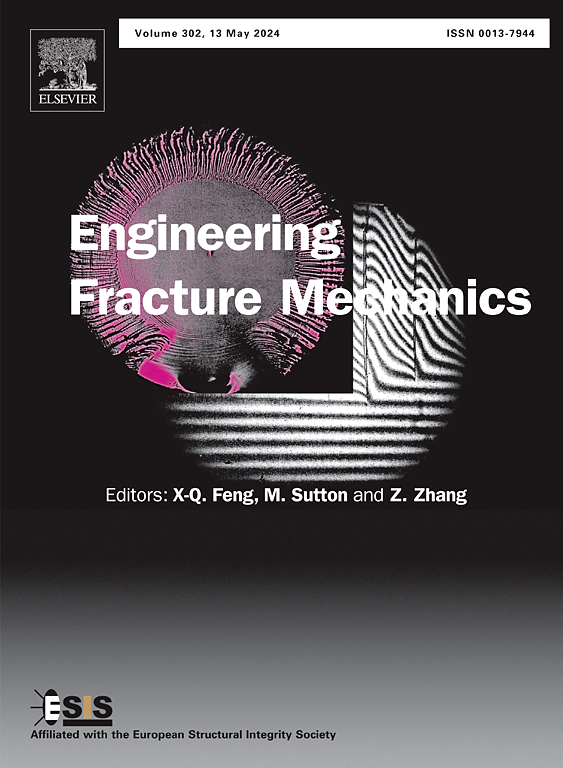研究岩石碰撞的新型实验方法
IF 4.7
2区 工程技术
Q1 MECHANICS
引用次数: 0
摘要
本文介绍了一种充分利用应力波理论研究岩石碰撞的新实验方法。在该方法中,在气枪和分体式霍普金森压力棒(SHPB)的传输棒之间放置了一个新开发的能量传输组件。上述组件包括一个在指定距离内无摩擦移动的入射杆、一个焊接在入射杆上的圆形钢板和一个用螺栓固定在分体式霍普金森压力棒基座上的支撑底座。入射杆的远端连接着岩石试样。当由气枪推动的击杆撞击入射杆时,压缩应力波会从入射杆传递到岩石试样。当压缩波到达岩石试样的自由端时,它被反射成拉伸波。当纯应力变成拉应力,并超过岩石试样和入射棒之间界面上胶水的拉伸强度时,岩石试样就会被弹出,然后弹出的试样会与传输棒相撞。在试样飞行过程中,岩石试样的速度可通过激光仪器测量,而传递到传输棒上的剩余能量则可通过其上的应变计测量。岩石试样在碰撞前的飞行过程和碰撞后的碎片飞行过程可以用高速照相机拍摄下来。这种实验方法不仅可以用来研究移动岩石与另一物体之间的碰撞,还可以用来模仿落重试验。利用这种新方法,成功地进行了七次岩石碰撞试验。本文章由计算机程序翻译,如有差异,请以英文原文为准。
A novel experimental method for studying rock collision
This paper introduces a new experimental method for studying rock collision by making full use of the beauty of stress wave theory. In this method, a newly developed energy transmission component was placed between the gas gun and the transmitted bar of a split Hopkinson pressure bar (SHPB). The forementioned component consists of an incident bar which moves frictionlessly within a specified distance, a circular steel plate welded to the incident bar, and a support base which is bolted to the SHPB bed. A rock specimen is attached to the farther end of the incident bar. When the striker bar, propelled by the gas gun impacts the incident bar, a compressive stress wave is transmitted from the incident bar to the rock specimen. When the compressive wave arrives at the free end of the rock specimen, it is reflected into a tensile wave. Then when the pure stress becomes tensile and it is over the tensile strength of the glue at the interface between the rock specimen and the incident bar, the rock specimen is ejected, and then the ejected specimen will collide with the transmitted bar. During specimen flight, the velocity of the rock specimen can be measured by a laser instrument, while the remained energy transferred to the transmitted bar is measured by strain gauges attached to it. The process of rock specimen flight before collision and fragment flight after collision can be photographed using a high-speed camera. This experimental method can be used to not only study a collision between a moving rock and another object, but also imitate a drop weight test. By using this new method, seven rock collision tests were successfully conducted.
求助全文
通过发布文献求助,成功后即可免费获取论文全文。
去求助
来源期刊
CiteScore
8.70
自引率
13.00%
发文量
606
审稿时长
74 days
期刊介绍:
EFM covers a broad range of topics in fracture mechanics to be of interest and use to both researchers and practitioners. Contributions are welcome which address the fracture behavior of conventional engineering material systems as well as newly emerging material systems. Contributions on developments in the areas of mechanics and materials science strongly related to fracture mechanics are also welcome. Papers on fatigue are welcome if they treat the fatigue process using the methods of fracture mechanics.

 求助内容:
求助内容: 应助结果提醒方式:
应助结果提醒方式:


